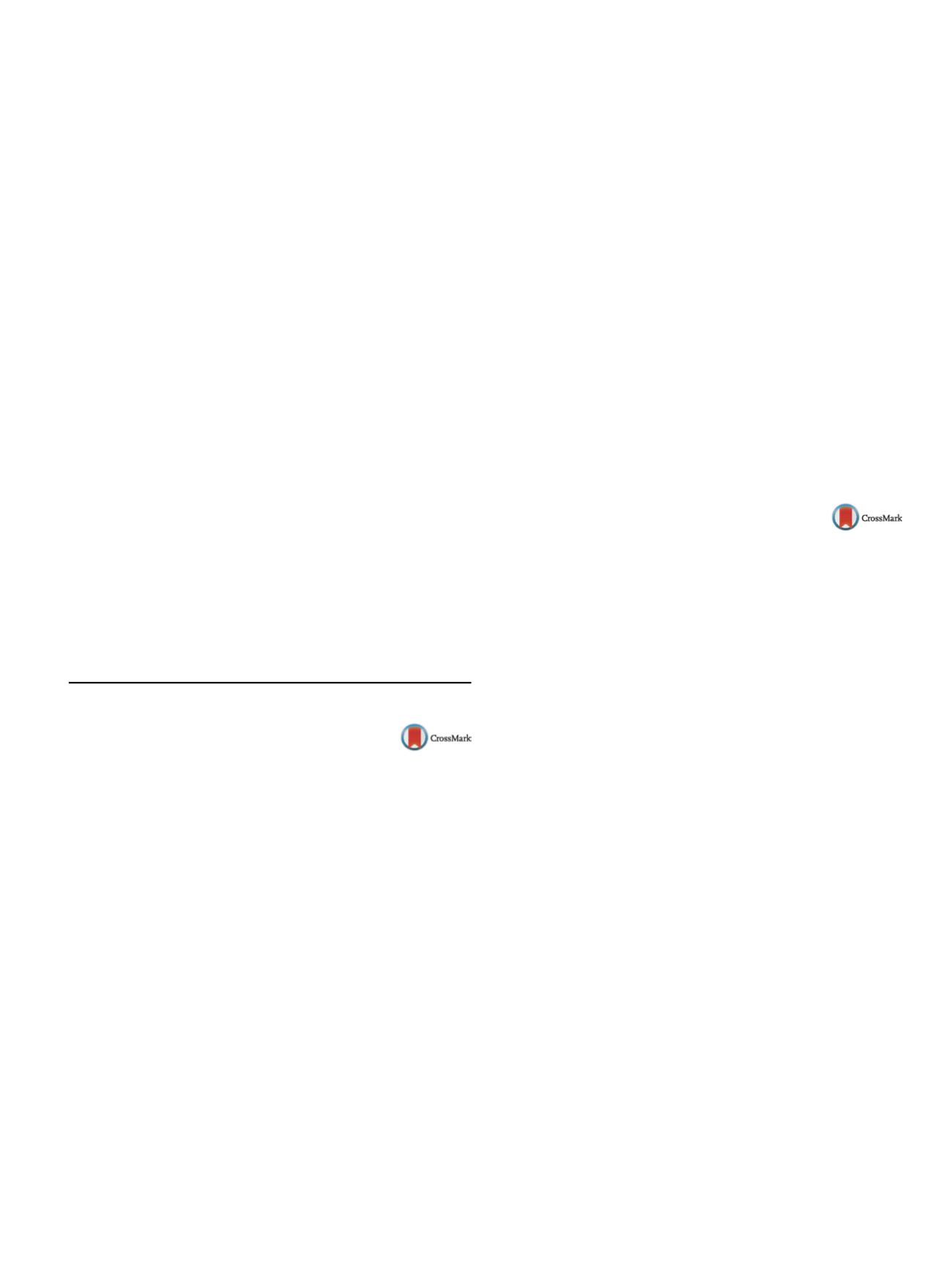

25th European Congress of Psychiatry / European Psychiatry 41S (2017) S53–S68
S67
Aims
To present preliminary findings from the EUGEI European
Network of National Schizophrenia Networks Studying Gene Envi-
ronment Interactions study.
Methods
Population based FEP incidence/case control study.
Comparison of the incidence rate of FEP and of the distribution
of several risk factors (e.g. substance abuse, neighborhood depri-
vation, urbanicity and trauma) in natives and migrants in different
countries across Europe.
Results
Preliminary results of the EUGEI study will be discussed
in comparison with previous evidences.
Conclusion
The EUGEI study allows a deeper understanding of
the excess of FEP found among migrants in Europe.
Disclosure of interest
The authors have not supplied their decla-
ration of competing interest.
Further reading
European Network of National Networks studying Gene-
Environment Interactions in Schizophrenia (EU-GEI), van Os
J, Rutten BP, et al. Identifying gene-environment interactions in
schizophrenia: contemporary challenges for integrated, large-scale
investigations. Schizophr Bull. 2014 Jul;40(4):729–36.
Tarricone I, Boydell J, Kokona A, Triolo F, Gamberini L, Sutti E,
Marchetta M, Menchetti M, Di Forti M, Murray RM, Morgan C,
Berardi D. Risk of psychosis and internal migration: Results from
the Bologna First Episode Psychosis study. Schizophr Res. 2016
May;173(1-2):90–3.
http://dx.doi.org/10.1016/j.eurpsy.2017.01.069Workshop: Treatment-resistant schizophrenia:
Epidemiology, clinical course and innovative
treatments, with special reference to m-RESIST
project
W047
Definition, epidemiology, clinical
course and outcomes in
treatment-resistant schizophrenia
J. Seppala
1 , 2 ,∗
, J. Miettunen
1 , 3 , 4, E. Jääskeläinen
1 , 4,
M. Isohanni
1 , 4 , 5, A. Seppälä
1,
H. Koponen
6, M.R.G. M.-Resist Grou
p 71
University of Oulu, center for life course health research, Oulu,
Finland
2
Carea - Kymenlaakso social and health services, psyciatric services,
Kotka, Finland
3
University of Oulu, research unit for clinical neuroscience-
department of psychiatry, Oulu, Finland
4
Oulu university hospital and university of Oulu, medical research
center, Oulu, Finland
5
Oulu university hospital, department of psychiatry, Oulu, Finland
6
University of Helsinki and Helsinki university hospital, psychiatry,
Helsinki, Finland
7
TIC SALUT foundation, TIC SALUT foundation, Mataro, Spain
∗
Corresponding author.
Based on a systematic review on TRS 285 studies were included
regarding definitions of TRS (
n
= 11), genetics (18), brain structure
and functioning (18), cognition (8), other neurobiological studies
(16), medication (158), psychotherapy and cognitive rehabilitation
(12), electroconvulsive therapy (ECT) and repetitive transcranial
magnetic stimulation (rTMS) (15), prognosis (21), and other mis-
cellaneous studies (8). Definitions of TRS varied notably. TRS
was associated with 3 to 11-fold higher healthcare costs than
schizophrenia in general. One-fifth to one-third of all patients with
schizophrenia were considered to be resistant to treatment. Based
on limited evidence of genetics, brain structure and functioning and
cognition, TRS may present as a different disorder with different
etiology compared to non-TRS. Clozapine, olanzapine, risperidone,
ECT and cognitive-behavioral therapy have shown effectiveness,
although the number of studies and quality of research on interven-
tions is limited. About 40% to 70% of TRS patients had anunfavorable
prognosis. Younger age, living in a rural or less urban area, pri-
mary education level, more psychiatric hospital treatment days
in the year before first schizophrenia diagnosis, inpatient at first
schizophrenia diagnosis, paranoid subtype, comorbid personality
disorder and previous suicide attempt may be risk factors associ-
ated with TRS.
TRS is a poorly defined, studied and understood condition. To create
a framework of knowledge for TRS, as a basis to develop innovative
studies on treatment, there is a need for a consensus on the defini-
tion of TRS. Prospective long-term prognostic and novel treatment
intervention studies are needed
[1] .Disclosure of interest
The authors have not supplied their decla-
ration of competing interest.
Reference
[1] Seppälä A, et al. Psychiatria Fennica 2016.
http://dx.doi.org/10.1016/j.eurpsy.2017.01.070W048
Emerging sensor-based m-health
interventions in the assessment of
psychotic symptoms
M. Bulgheroni
Ab.Acus srl, R&D, Milan, Italy
This speech aims to overview ongoing research trends on the inte-
gration of mobile health and sensors based behavioral analysis
in therapeutics programs for subjects with mental health symp-
toms or disorders. The variety of easily acquirable personal data
by smartphones and wearables in a transparent and unobtru-
sive way, offers the opportunity to describe the person in terms
of his/her lifestyle and behavior at physical, cognitive and envi-
ronmental level. An appropriate management of these data may
initiate a new line in healthcare management characterized by tail-
ored and timely interventions. However, despite the huge amount
of data that could be acquired, an effective contribution of such
information to the improvement of the quality of care in mental-
health is still not sufficiently explored. The sensors and data which
have been used in studies on mental status include accelerometer,
gyroscope, GPS, microphone, calls, messages, screen, apps usage,
environmental light, heart rate, skin conductance, and tempera-
ture. The primary outcomes build on correlations between sensor
data andmental health status/severity of symptoms. These data are
provided from studies on bipolar disorders and depression, using
validated clinical scales (Patient Health Questionnaire-9; Hamilton
Rating Scale for Depression; Young Mania Rating Scale; Center for
Epidemiologic Studies Depression Scale; etc.).
m-RESIST consortium is fully aware of the importance to describe
behavioral patterns of patients with schizophrenia that could be
used to setup remotely based therapeutic tool. m-RESIST is set-
ting up a framework for the creation of a Clinical Decision Support
System based on a mobile therapeutic intervention for treatment-
resistant schizophrenia.
Disclosure of interest
The author has not supplied his declaration
of competing interest.
http://dx.doi.org/10.1016/j.eurpsy.2017.01.071

















